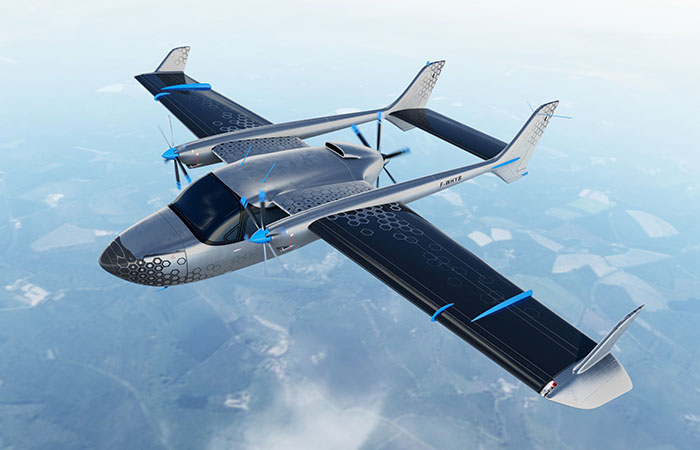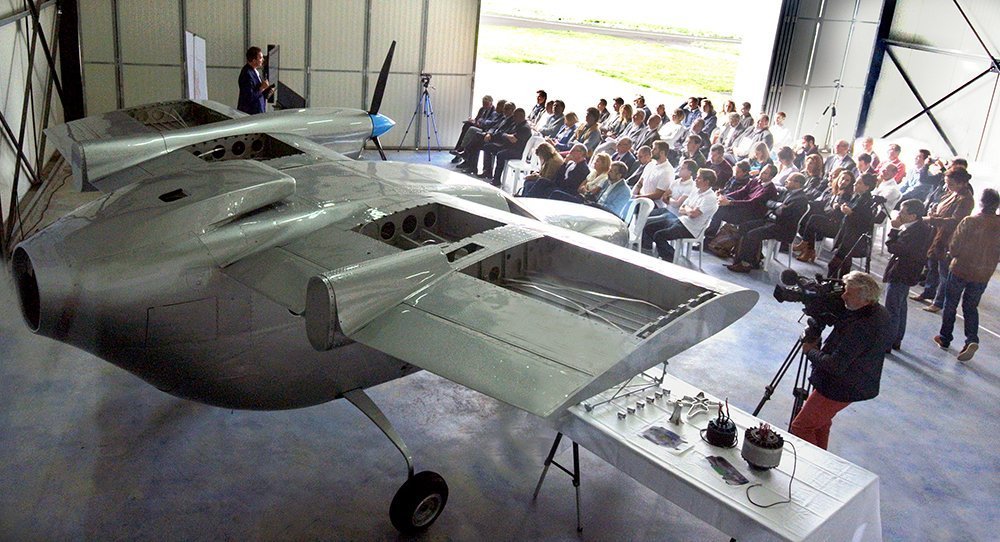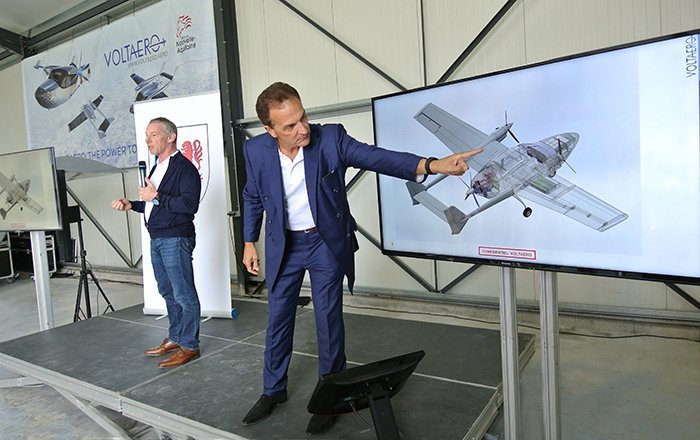
VoltAero’s ‘Iron Bird’ Enters Flight Testing Stage

In 2014, promise of an innovative new private aircraft came in the form of Airbus’ electric E-Fan project. Meant to be a hybrid electric craft, it would revolutionize private aviation on both ecological and cost fronts. But just three years later, in April 2017, Airbus abruptly canceled the project, citing unjustifiable production costs and a lack of demand. Now, just two years later, the project is in rebirth under a new name and company, backed by the same creative minds.
Meet VoltAero
VoltAero is a startup helmed by CEO Jean Botti, former Chief Technical Officer of Airbus and Didier Esteyne, test pilot of the original E-Fan project. Based out of the renowned Royan-Medis Aerodrome in France, VoltAero has been hard at work on a modern iteration of the canceled E-Fan: the Cassio.
VoltAero’s mission isn’t just to bring the Cassio to light after a tumultuous timeline, the company also aims to popularize hybrid aircraft — specifically the “push-pull” configuration of electric motors and internal combustion engines. The company hopes to produce aircraft suitable for regional travel, for “private owners, air taxi/charter companies, commercial flights for point-to-point regional travel, and for use in other utility-category applications.”

The Cassio: A breakdown
The Cassio borrows its design from the Cessna 337 Skymaster airframe. It features a 150-kW motor-driven pusher prop and two forward-facing props, both driven by 60 kW electric motors. A thermal combustion engine supplements the craft. All told, the Cassio is expected to push “600 kW of power: 300 kW from electric motors and 300 kW from the thermal engine.”
Total range on the Cassio isn’t yet known, though initial projections anticipate a maximum range of 1,300 km. Botti anticipates pure electrical flights of 200 km, moderate hybrid flights of 200-600 km, and heavy reliance on hybrid power for flights beyond 600 km. The Cassio’s design seats up to nine people comfortably.

A unique feature of the Cassio is the ability to dictate the fuel source. The craft has two levers delineating electric and thermal fuel. Pilots define the ratio of power on hybrid flights, while the craft’s automated balancing system sends appropriate output to the pusher and forward props for seamless control.

Testing and beyond
Using the results of its flight testing, VoltAero plans to fine-tune the Cassio before bringing the craft to market. The company has already begun design of the Cassio 2 — an all-composite airframe due out by 2022. In the meantime, VoltAero is working with the French government for certification in the new CS23 category. Upon certification, the company aims to attract investors and begin producing 150 craft per year, targeting regional BizAv needs.
The proven record of its founders and relative success of the program makes VoltAero’s Cassio an exciting prospect for hybrid jet enthusiasts.